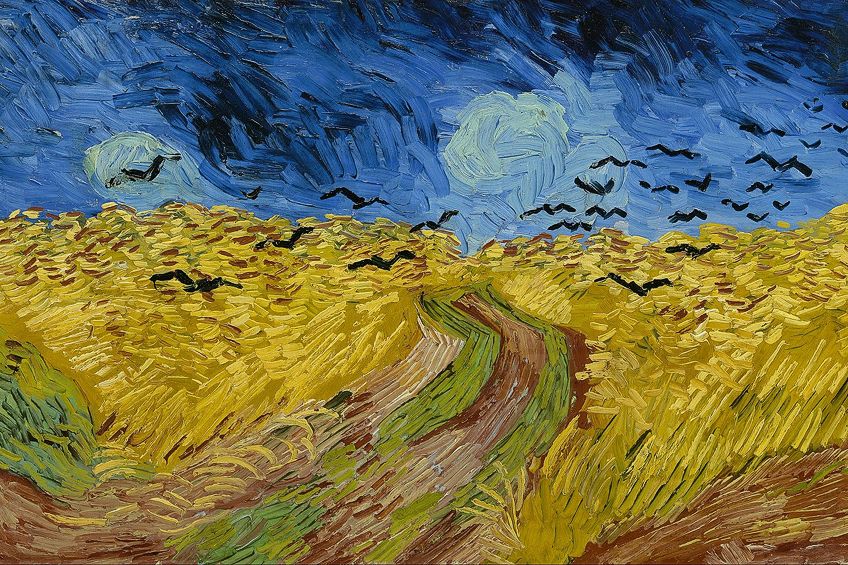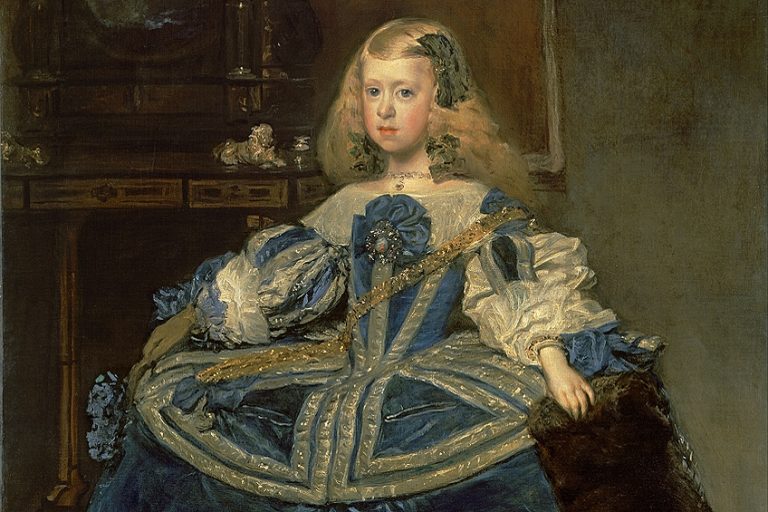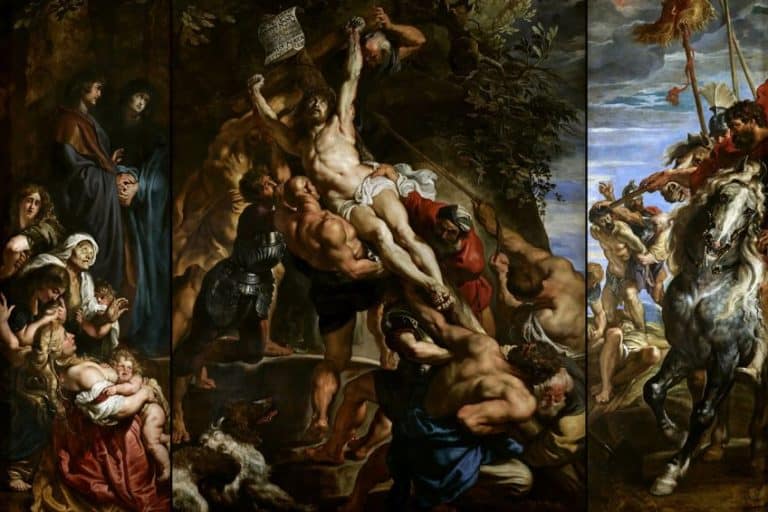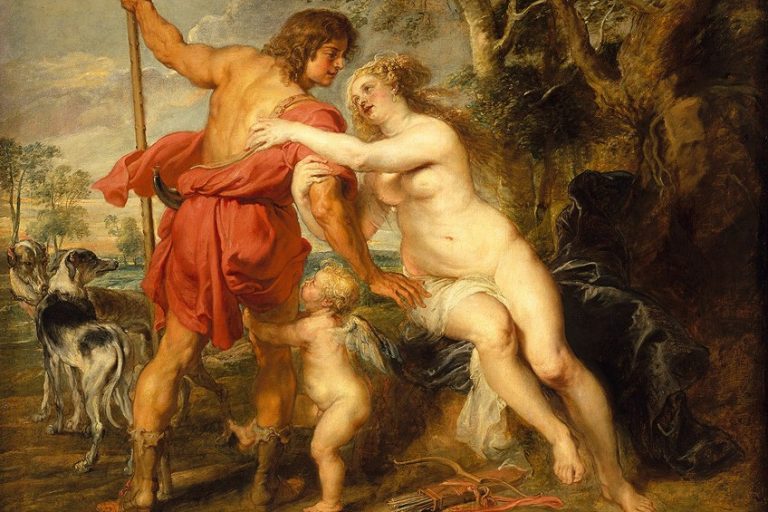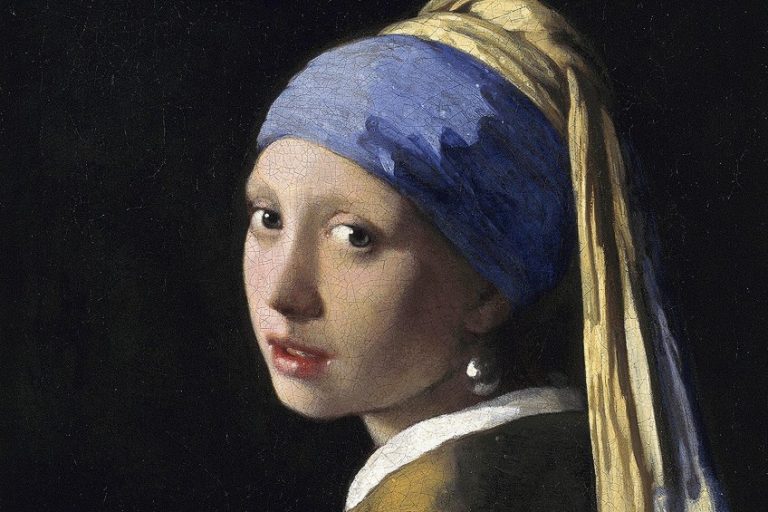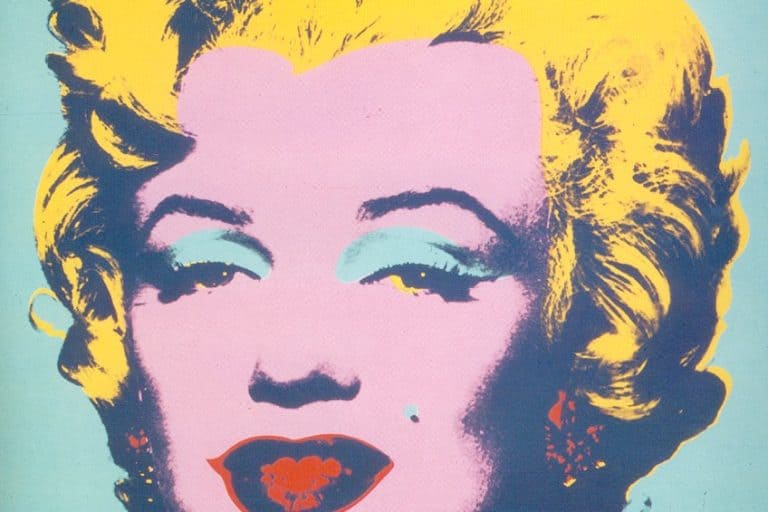Famous Paintings of Nature – Looking at the Best Nature Paintings
Humans are intrinsically linked to the environment around us. We have been formed by the terrain and have in turn helped form it. Nature artists have always found deep inspiration from the world around them, creating nature paintings that reflect the beauty of the earth.
Famous Paintings of Nature
Paintings of nature have been created in many different artistic styles, from naturalistic to surreal. Each artist has interpreted the natural world through their unique perspectives and techniques. From placid scenes to powerful symbolism, painting nature has served as a medium to express the beauty and pain of nature.
The Hay Wain (1821) by John Constable
| Created In | 1821 |
| Medium of Artwork | Oil on Canvas |
| Dimensions of Artwork | 130 cm x 185 cm |
| Currently Housed In | The National Gallery |
John Constable came to prominence by depicting the beautiful nature that surrounded his house and is credited by art historians with redefining the style of painting nature. His artwork was so linked with the Dedham Vale region that it was renamed “Constable Country.” He never made a living from his work during his lifetime, but he earned widespread public and critical appreciation after his death.
He liked the landscape genre, as did other English artists who were part of the Romanticism movement, and this is one of his most well-known landscape paintings.
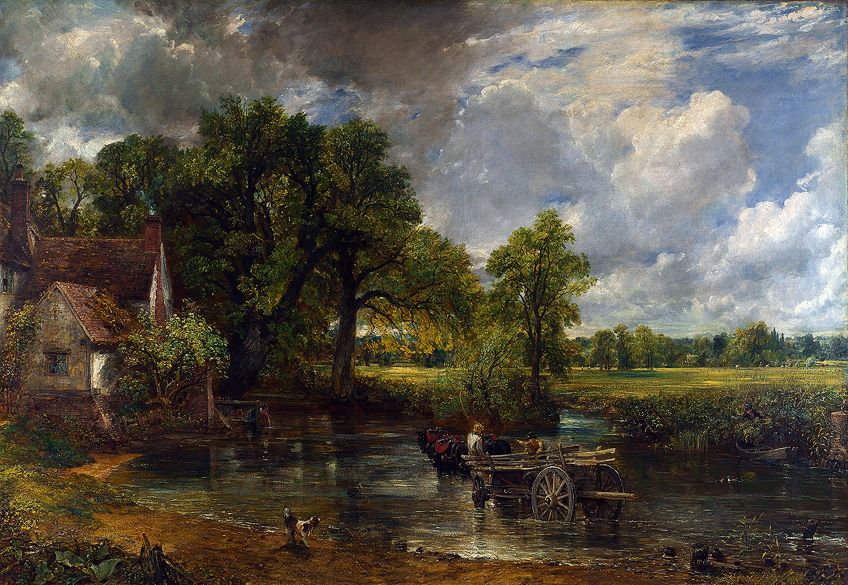
It depicts a farm along the Stour River, which flows between the towns of Essex and Suffolk. The piece’s focal point is a huge wooden wagon being drawn by three horses across the River Stour. The scene shows a location near Flatford Mill, which belonged to his dad. The picture is widely recognized as one of history’s best Romantic landscape paintings.
The Great Wave off Kanagawa (1832) by Katsushika Hokusai
| Created In | 1832 |
| Medium of Artwork | Woodblock Print |
| Dimensions of Artwork | 25 cm x 37 cm |
| Currently Housed In | Metropolitan Museum of Art |
This is the most famous Japanese picture in the world, and it is artist Hokusai’s most well-known work. It was initially printed in 1892 as the first print in the series. The artwork portrays a massive menacing wave towering over three tiny fishing boats in Sagami Bay, with Mount Fuji in the distance.
Because of the enormity of the wave, some assumed it was a tsunami, while others said it was more likely a massive rogue wave.

After a time of seclusion from the Western world, Japanese art forms were transported to Europe and swiftly embraced, a phenomenon known as Japonism. This specific artwork was known for its effect on the culture and art of Europe, even Vincent van Gogh, a big fan of Hokusai’s artwork, complimented the excellence of linework in the Japanese picture, noting that the image had a frightening effect on his emotions.
The Oxbow (1836) by Thomas Cole
| Created In | 1836 |
| Medium of Artwork | Oil on Canvas |
| Dimensions of Artwork | 130 cm x 193 cm |
| Currently Housed In | Metropolitan Museum of Art |
Thomas Cole was a well-known nature artist who was born on February 1, 1801, in Lancashire, England. He was a founding partner of the Hudson River School, a US movement greatly influenced by Romantic painters’ work, and he is recognized as one of the finest painters of 19th-century America. Cole’s artwork is known for its representation of the American untamed scene. Cole was working on a historical series for Lumen Reed.
All five paintings in the series were intended to reflect a distinct historical composition.
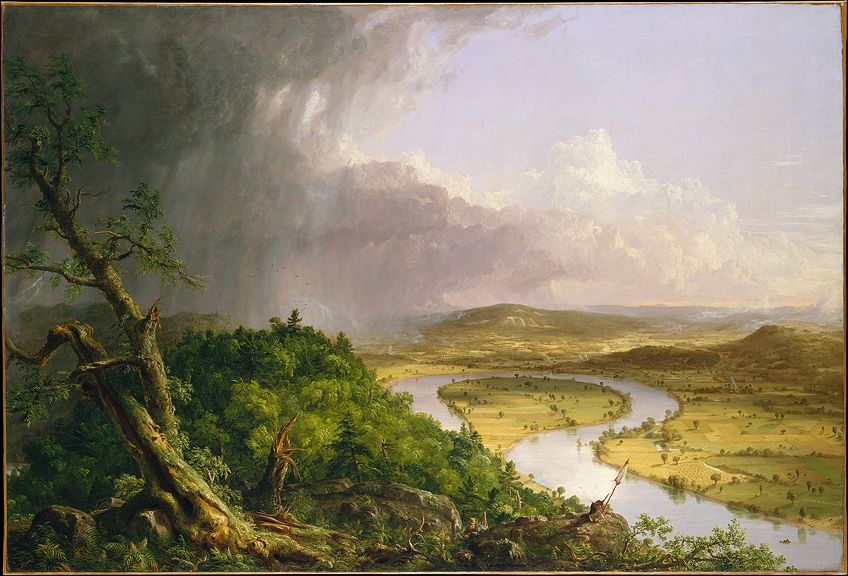
Cole was initially excited by the prospect, but as the long and slow process progressed, he became quiet and withdrawn, so Reed suggested that he take a rest from the installment and work on something he enjoyed more, such as his paintings of nature for the upcoming annual exhibition. Cole answered that he would finish the final painting in the series and show it, but Reed wished to wait until they could all be shown at the same time, so he encouraged Cole to paint this instead.
Roseate Spoonbill (c. 1836) by John James Audubon
| Created In | c. 1836 |
| Medium of Artwork | Engraving and Aquatint |
| Dimensions of Artwork | 64 cm x 97 cm |
| Currently Housed In | National Gallery of Art |
Many of John James Audubon’s most renowned artworks concentrated on paintings of nature including diverse feathered animals, earning him a reputation among bird watchers and art fans alike. He was also an ornithologist and a naturalist and his well-known book The Birds of America became a precious asset in the study of ornithology, and he is credited with discovering 25 new bird species.
As a tribute to his talents as both an artist and a globe traveler, a number of major organizations dedicated to nature bear his name.
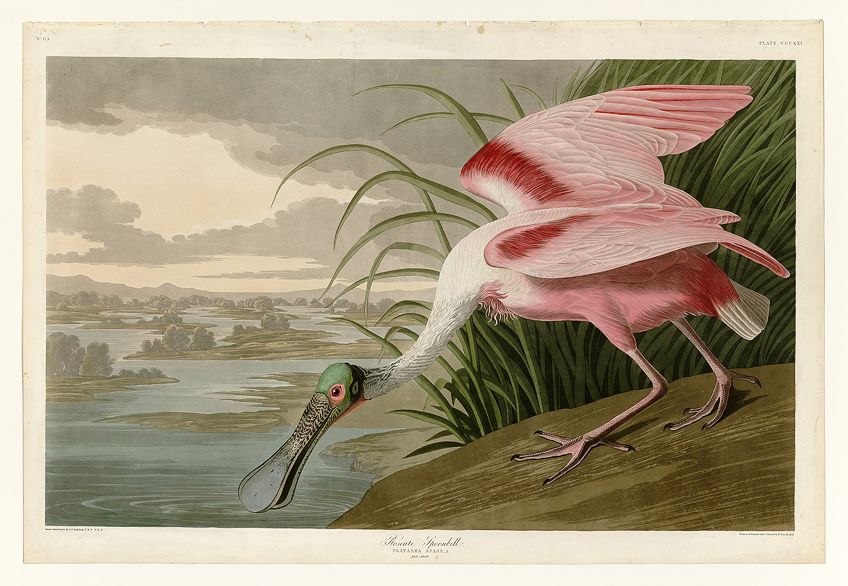
This painting applied bold greenish hues of the bird’s beak that moves into the Spoonbill’s bold, pink plumage. The artwork is set against a bluish hue, a liquid backdrop that consists of rocky formations. The artist sought to highlight the intensity of the Spoonbill’s pink feathers by portraying the bird as standing in front of foliage along the water’s side.
The Horse Fair (1855) by Rosa Bonheur
| Created In | 1855 |
| Medium of Artwork | Oil on Canvas |
| Dimensions of Artwork | 244 cm x 507 cm |
| Currently Housed In | Met Museum |
This is Rosa Bonheur’s most famous artwork, which depicts an equine auction conducted in Paris on the leafy Boulevard, near the local sanatorium, which can be seen on the left side. She made drawings of nature there twice a week for a year and a half, dressed as a guy to avoid notice. When the picture premiered in 1853, she was well recognized as an animal illustrator, and it earned widespread acclaim. The artist took inspiration for the final plan from Théodore Gericault and George Stubbs.

Bonheur was a pioneering feminist. She lived completely autonomously, with no monetary assistance other than her own earnings through art. She was publicly a lesbian, lived with another woman her entire life, which was unprecedented at the time. She also refused to wear the typically feminine dress code and instead asked for police permission in 1852 to wear male clothes while working.
As a result, she established a precedent and served as a role model for artists such as Georgia O’Keeffe and Frida Kahlo, who made comparable visual declarations of egalitarianism in the 20th century.
The Heart of the Andes (1859) by Frederic Edwin Church
| Created In | 1859 |
| Medium of Artwork | Oil on Canvas |
| Dimensions of Artwork | 167 cm x 302 cm |
| Currently Housed In | Met Museum of Art |
It stands 167 cm tall and 302 cm broad and represents an idyllic scene in the South American Andes, where the artist toured twice. Its presentation in 1859 caused quite a stir, cementing Church’s position as the greatest landscape painter in the United States. The artwork has been in the collection of New York’s Metropolitan Museum of Art since 1909, and it is one of Frederic Edwin Church’s most famous pieces.
This painting is a synthesis of the geography he encountered throughout his travels in South America.

A sparkling pool is supplied by a waterfall in the landscape’s center-right. In the distance, the Ecuadorian Mount Chimborazo appears; the viewer’s eye is drawn to it by the nearer dark slopes that descend from right to left. The lightly trodden path, a village and church in the central area, and two natives in the foreground all point to human presence. Between April and May of 1859, the painting was first released to the public in the Tenth Street Studio Building, New York’s first studio dedicated to artisans.
Looking Down Yosemite Valley (1865) by Albert Bierstadt
| Created In | 1865 |
| Medium of Artwork | Oil on Canvas |
| Dimensions of Artwork | 163 cm x 254 cm |
| Currently Housed In | Birmingham Museum of Art |
Few locations on our planet are as breathtaking as Yosemite Valley in California. Albert Bierstadt is among the few nature painters who were able to depict a picture that resembled the pristine views of the valley. It was completed in 1865 and depicts a landscape surrounded by towering granite formations on either side of a broad, rolling valley beneath.

The piece was praised for its extraordinarily accurate depiction of Yosemite’s natural grandeur, particularly the way the setting beams shine from around the edges of the steep rocky ledge on the painting’s right. It was Bierstadt’s first sizable Yosemite painting, for which he became famous.
Bierstadt depicts the valley from a high point slightly above the Merced River, facing due west, based on sketches done during a visit in 1863.
Sunlight and Shadow: The Newbury Marshes (1875) by Martin Johnson Heade
| Created In | 1875 |
| Medium of Artwork | Oil on Canvas |
| Dimensions of Artwork | 30 cm x 67 cm |
| Currently Housed In | National Gallery of Art |
In his early twenties, Heade painted primarily portraits, but after meeting numerous painters from the Hudson River School, he became more interested in paintings and drawings of nature. Heade initially discovered the Newbury Marshes about 1859, and by the conclusion of his creative career, he had made over 100 paintings using the marsh as the subject matter.
These paintings of nature would account for around one-fifth of his overall creative output.

He depicted the marsh in various seasonal and climatic periods throughout the course of those 100 paintings, as well as how those factors helped nourish and develop the swamp over time, and how animals and humans alike used the swamp for fishing and hunting. He is reported to have been unique in his devotion and degree of detail in his evaluations and graphic depictions of the marsh.
Wheatfield with Crows (1890) by Vincent van Gogh
| Created In | 1890 |
| Medium of Artwork | Oil on Canvas |
| Dimensions of Artwork | 50 cm x 103 cm |
| Currently Housed In | Van Gogh Museum |
This famous painting was created in July of 1890, during the final weeks of the artist’s life. Some people believe that it is the last painting he ever created, but a couple of other of his paintings are contenders for that same placement. A stunning overcast sky packed with crows above a wheat field is depicted in the painting. The sensation of solitude is heightened by a center road that leads nowhere and the crows’ unclear flying direction.

Two-thirds of the canvas is taken up by a windy wheat field. The crows are interested in and examine everything. The ancient people, who lived far more thoroughly in and with nature than we do, found it of great benefit to follow the advice of such a wise and sage bird in a myriad of obscure matters where the human condition has yet to shed light.
The picture conveys both sadness and the impression that his life is nearing its end.
Tiger in a Tropical Storm (1891) by Henri Rousseau
| Created In | 1891 |
| Medium of Artwork | Oil on Canvas |
| Dimensions of Artwork | 130 cm x 162 cm |
| Currently Housed In | National Gallery, London |
Henri Rousseau started his artistic life on the periphery of famous artists and experts of the time. This was one of the nature artist’s early works and criticized by some reviewers as being overly juvenile. When it was originally shown in 1891, however, some art enthusiasts regarded the many distinct brilliant layers as one that merited appreciation.
The picture depicts a massive feline in the middle of a fierce storm, about to attack unnamed prey.
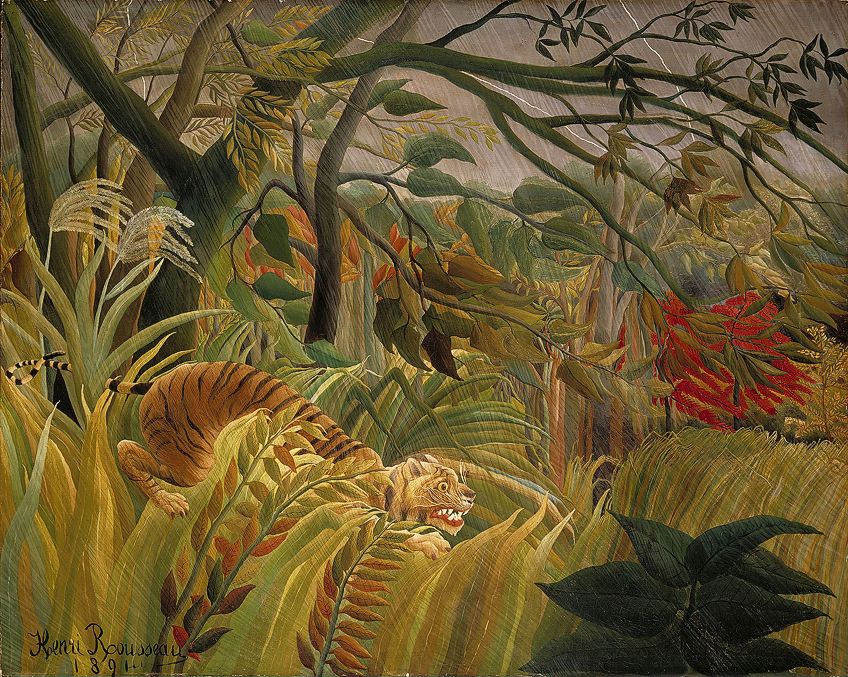
Subsequently, Rousseau would say that the tiger was ready to attack a group of adventurers. His use of a variety of green hues reflects the luxuriant, compelling character of the jungle. Since then, many art lovers have praised Rousseau’s work for taking a fresh look at the frequently depicted forest. He applied silver paint to symbolize rains that are rushing in with a very stiff gust. Rousseau’s work was controversial during his life, however, after his demise, he has ascended to the top of the list of painters who adored creating paintings of nature.
Sainte-Victoire seen from the Bibémus Quarry (1897) by Paul Cézanne
| Created In | 1897 |
| Medium of Artwork | Oil on Canvas |
| Dimensions of Artwork | 65 cm x 81 cm |
| Currently Housed In | Baltimore Museum of Art |
Throughout his stay in Provence-Alpes-Côte d’Azur, the well-known nature artist from France began to think about retiring. The artist got great inspiration for his famous nature paintings in this magnificent setting surrounded by all the mountains, greenery, and sunlight. Around eighty of his painted landscapes include the Sainte-Victoire mountains.
Unlike other well-known Impressionist landscape painters, he did not blur the boundaries between objects in his works, instead depicting them clearly with black outlines.

He did not create realistic landscape paintings, preferring to express them artistically via his distinctive portrayal of things that are not completely aberrant but are made by geometric forms akin to the Cubist style. He used the sweeps in thickened layers to emphasize the surfaces of the painting, a technique called impasto. The mountains were believed to be enormously interesting to him because of their grandeur and magnitude, and many view them as his muse, resulting in an endless source of innovation and motivation for Cézanne.
Water Lilies and Japanese Bridge (1899) by Claude Monet
| Created In | 1899 |
| Medium of Artwork | Oil on Canvas |
| Dimensions of Artwork | 92 cm x 73 cm |
| Currently Housed In | Met Museum |
By the end of the 19th century, Monet’s financial problems had passed him by for the most part, and he was able to purchase Giverny – in truth, he had amassed enough riches to be able to spend his earnings on his first house. It would culminate in a magnificent and one-of-a-kind estate, complete with the artist’s most interesting gardens as well as a water lily lake.
In 1893, he received planning authorization, and he built the bridge, which would become a feature in his artworks.
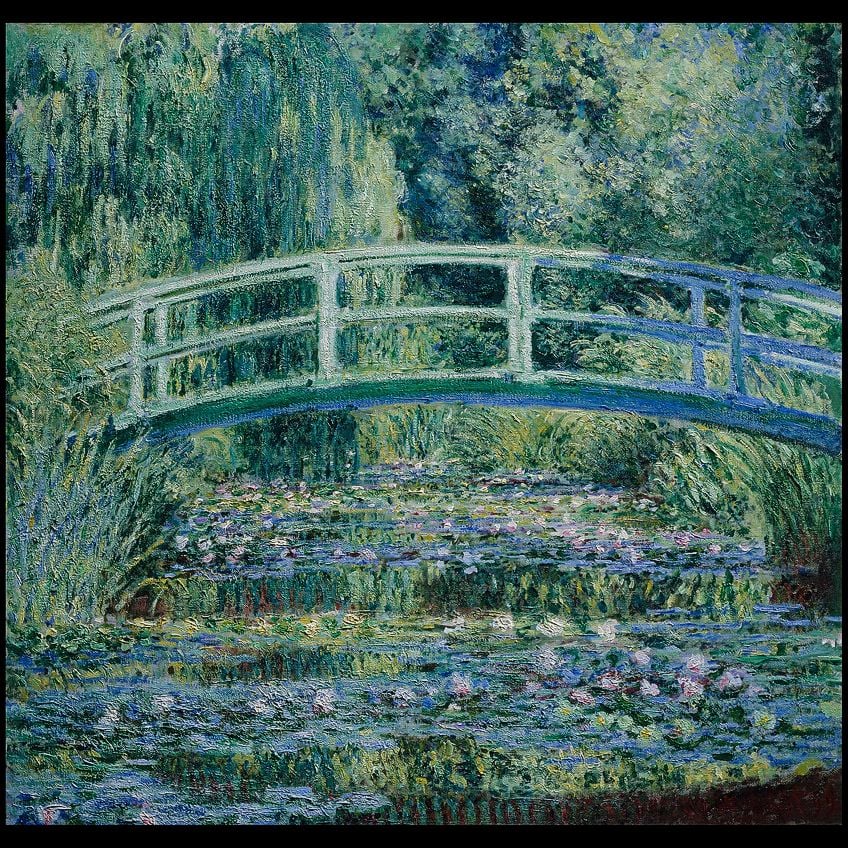
Up until 1897, he only created around three pieces of the area. This 1899 painting is beautiful in its arrangement of backdrop forests, the famous bridge, and weeping willows. It’s made up of quick strokes, which he used a lot in his later years. Monet explained in a letter how he seeded the flowers for pleasure – he hadn’t planned to paint them, but once they established themselves, they virtually were his sole inspiration.
Road Near Mont Sainte-Victoire (1906) by Paul Cézanne
| Created In | 1906 |
| Medium of Artwork | Oil on Canvas |
| Dimensions of Artwork | 81 cm x 99 cm |
| Currently Housed In | Hermitage Museum |
Cézanne’s Mont Sainte-Victoire became one of his most recurrent and diverse topics, with the painter altering an element of the landscape every time, from his viewpoint to the lighting to the compositional elements to the atmosphere he wanted to portray. He painted from a multitude of different perspectives in these paintings including his brother’s farm and a quarry.
His landscapes typically featured Mont Sainte-Victoire, as well as the valley and plains from which it emerged.
This painting belongs to the Post-Impressionist movement. The artist used geometric forms to portray the natural world and various hues to depict an object’s depth. While the Impressionists sought to represent nature directly as they experienced it, Cézanne typically tried to communicate a feeling of what was underneath what the human eye could perceive, but he still had a strong eye for subtle shifts in lighting and mood.
The Flamingos (1907) by Henri Rousseau
| Created In | 1907 |
| Medium of Artwork | Oil on Canvas |
| Dimensions of Artwork | 114 cm x 163 cm |
| Currently Housed In | Private Collection |
A flock of flamingos is depicted in the artwork on the riverbank, queued up according to size and maintaining varied positions. A peninsula or spit across the lake from the bank is a group of locals. The stream is teeming with magnificent and lovely lilies. Lotus blooms drift on the water’s surface, while yellow and pink blossoms rise erect on stalks far above the stream. A lush forest lies across the river.

The emphasis of the flamingos is positioned to the left of the image. The lilies represent tranquillity and serenity. They are the major focal point of this artwork and the biggest items in the progression of colors. The lilies complement each other and draw one’s focus towards the flamingos. The contrast of reality and imagination is celebrated in this masterwork.
According to legend, Rousseau’s army duty included a campaign to Mexico, where he got his ideas. This, however, was later disproved.
Black Mesa Landscape, New Mexico (1930) by Georgia O’ Keeffe
| Created In | 1930 |
| Medium of Artwork | Oil on Canvas |
| Dimensions of Artwork | 61 cm x 89 cm |
| Currently Housed In | Tate Museum, London |
Georgia O’Keeffe was a painter from the United States. She is often regarded as the most prominent female figure in American Modernism. Her rich, metaphorical paintings of wildflowers and the American Southwest are among the 20th century’s most instantly identifiable works. All of the late artist’s landscapes and close-up portrayals of nature were filled with mythical force.
Her sceneries are filled with pastel blossoms and skulls, yet her pared-down compositions may often drift into the abstract. The artwork depicts a view from New Mexico’s Black Mesa area, which is noted for its harsh, inhospitable environment. The use of vivid, reddish colors in the foreground of O’Keeffe’s painting draws the viewer’s attention, while the backdrop features huge mountains that appear to emerge from the base of the painting.
And with that, we end our list of famous paintings of nature. Nature paintings have been made in a variety of creative styles, ranging from realistic to fantastical. Each artist has portrayed the natural environment in their own unique way, using their own viewpoints and skills. Painting nature has served as a means to communicate the beauty and anguish of nature, ranging from serene vistas to profound symbolism.
You can also read our famous nature paintings webstory here.
Frequently Asked Questions
How Long Have Artists Been Creating Drawings of Nature?
Humans have been creating artworks of nature since we were able to first create art. Some of the first art was based on natural elements and objects. From animals to plants, humans have always found it necessary to depict the world around them.
Which Style Do Artists Prefer to Use for Painting Nature?
There are many styles that can be used for painting nature. Nature paintings can be naturalistic or impressionistic. It can even be realistic or abstract. It depends on how the artist would like to portray their version of reality.

Emma completed her Bachelor’s Degree in International Studies at the University of Stellenbosch. She majored in French, Political Science, and History. She graduated cum laude with a Postgraduate Diploma in Intercultural Communication. However, with all of these diverse interests, she became confused about what occupation to pursue. While exploring career options Emma interned at a nonprofit organization as a social media manager and content creator. This confirmed what she had always known deep down, that writing was her true passion.
Growing up, Emma was exposed to the world of art at an early age thanks to her artist father. As she grew older her interests in art and history collided and she spent hours pouring over artists’ biographies and books about art movements. Primitivism, Art Nouveau, and Surrealism are some of her favorite art movements. By joining the Art in Context team, she has set foot on a career path that has allowed her to explore all of her interests in a creative and dynamic way.
Learn more about the Art in Context Team.
Cite this Article
Emma, Littleton, “Famous Paintings of Nature – Looking at the Best Nature Paintings.” Art in Context. September 30, 2021. URL: https://artincontext.org/famous-paintings-of-nature/
Littleton, E. (2021, 30 September). Famous Paintings of Nature – Looking at the Best Nature Paintings. Art in Context. https://artincontext.org/famous-paintings-of-nature/
Littleton, Emma. “Famous Paintings of Nature – Looking at the Best Nature Paintings.” Art in Context, September 30, 2021. https://artincontext.org/famous-paintings-of-nature/.


